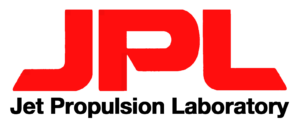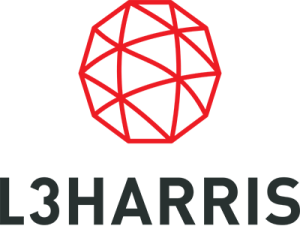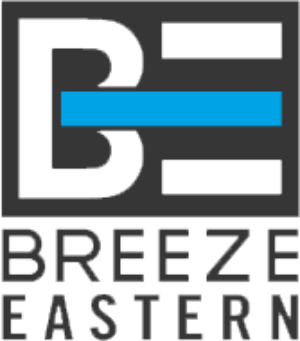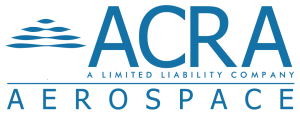Hidden Costs of Hiring the Wrong Executive Candidate

Every executive decision shapes a company’s trajectory. Hiring the wrong one can quietly reverse it. A poor executive hire does more than fall short of expectations. It delays progress, fractures internal trust, and weakens the organization’s execution ability. Often, the damage unfolds quietly until key initiatives stall or critical talent begins to disengage.
This is not simply a matter of underperformance. It is misdirection at the highest level, and the actual cost is often underestimated until it’s too late. What follows is a breakdown of the financial, cultural, and strategic consequences and how to avoid them through a more disciplined, outcome-focused approach.
1. Financial Fallout of Poor Executive Hires
Compensation is only the starting point. A senior executive earning a six- or seven-figure package who fails to deliver value becomes a direct financial liability. Severance payouts, transition support, and the time internal leaders spend managing poor performance add to the burden. Recruiting and onboarding a replacement further extends the financial exposure.
Less visible but equally damaging is the resource misallocation that occurs during the executive’s tenure. Budgets are diverted toward misaligned priorities, cost overruns emerge due to poor oversight, and investments tied to failed initiatives deliver little to no return. These financial drains often continue long after the individual exits, eroding margins and straining future budgets.
What financial impact can a poor executive decision have?
Estimates place the financial cost of a failed executive hire at three to five times the executive’s annual compensation. However, the actual impact depends on the role. The financial damage can scale rapidly when a misstep affects investor relations, customer retention, or P&L accountability.
Delays in strategic execution reduce time-to-market advantage and open the door to competitors. This is why companies that rely on internal referrals or traditional sourcing methods often pay the price later.
Executive search firms with a track record of measurable placements bring discipline to the process. A structured, performance-based search system ensures that every candidate is assessed for experience and ability to meet defined business outcomes. This alignment protects against costly misfires and preserves momentum.
2. Productivity and Growth Setbacks
Execution relies on clarity, consistency, and alignment. When a new executive misinterprets priorities or fails to integrate with the existing leadership framework, it creates confusion at every level. Communication becomes fragmented, accountability weakens, and day-to-day operations lose cohesion.
The cumulative result is operational inefficiency that slows the organization’s ability to meet key milestones. For example, an operations leader lacking execution rigor can create process bottlenecks, forcing teams to recalibrate repeatedly. This disrupts workflow, drains team energy, and pushes critical deliverables off schedule, undermining overall organizational momentum.
What are the long-term strategic consequences?
The consequences extend well beyond tactical setbacks. Poor executive leadership can derail major growth initiatives, stall expansion efforts, dry up new product pipelines, and fail to complete critical transformation programs. Over time, the organization loses its competitive position and strategic flexibility.
This level of failure is not due to poor intent. It results from placing someone into a leadership role without thoroughly assessing their ability to drive high-stakes, long-term initiatives. Companies that rely on traditional hiring methods often focus too narrowly on qualifications and past titles, overlooking critical factors such as business alignment and execution style.
The most effective solution is a disciplined, outcome-oriented hiring approach. Executive search services that assess strategic compatibility and operational readiness help ensure that leaders are equipped to execute at the level the business demands.
3. Cultural and Team Morale Damage
Culture is shaped from the top. Teams respond with hesitation if a leader disregards established norms or fails to embody the company’s values. Communication becomes guarded. Alignment breaks down. High performers begin to disengage, as the environment no longer supports trust or clarity.
The presence of a leader who undermines psychological safety, whether through poor interpersonal behavior, inconsistency, or lack of accountability, creates instability. As tension grows, productivity drops, internal politics rise, and turnover risk increases across critical roles.
What happens to internal trust and cohesion?
Trust is not easily rebuilt once broken. A poor leadership example shifts company behavior from coordinated execution to internal protection. Departments work in silos; information flow becomes restricted, and risk-taking declines. These symptoms often persist even after the executive has been replaced.
What remains is a team that requires time and effort to realign, often at the expense of strategic focus. Organizations that overlook cultural fit in hiring decisions spend significantly more time managing repair than driving performance.
Building a sustainable leadership pipeline involves more than filling roles with technically qualified individuals. It requires leaders who can preserve and elevate culture, reinforce core values, and model the behaviors expected at every company level.
4. Reputational and Legal Consequences
A poorly chosen executive who mishandles external communications, disregards compliance protocols, or performs inconsistently under pressure can quickly erode trust among the team and leadership. Customers grow wary, partners reconsider alignment, and investors question stability.
Brand equity takes years to build and can be compromised in days. This is particularly dangerous when a leadership failure is tied to public-facing decisions, media visibility, or regulatory oversight. In highly sensitive sectors, one breach of protocol or lapse in judgment can result in terminated contracts, increased audits, or disqualification from future opportunities.
What are the risks of not properly vetting?
Failure to conduct thorough due diligence at the executive level creates exposure on multiple fronts. Beyond public perception, there are real legal and operational risks. These include civil litigation, employment claims, non-compliance with industry regulations, and potential violations of export laws or security protocols.
Organizations that shortcut the vetting process often do so based on credentials or reputation alone. However, a résumé does not reveal behavioral patterns, judgment under pressure, or how well a leader will represent the company in complex, high-stakes environments. Without rigorous assessment, companies risk hiring individuals whose actions could result in sanctions, lawsuits, or permanent reputational harm.
5. Recovery Time and Opportunity Costs
The process of replacing a misaligned executive often exceeds twelve months. Recognizing the mismatch can take time, and the transition period includes offboarding, knowledge transfer, and organizational recalibration. Even after a replacement is secured, onboarding and alignment to business objectives require additional time before full effectiveness is restored.
While this process unfolds, leadership gaps impact strategic visibility and decision-making speed. Interim leaders are stretched thin, and focus shifts toward maintaining the status quo rather than advancing key initiatives. The resulting stagnation leaves the business exposed, allowing competitors to seize market share and capitalize on lost momentum.
What opportunities are lost in the meantime?
Leadership instability delays execution across multiple fronts. Product development slows, market expansion is deferred, and strategic partnerships remain undeveloped. These missed opportunities compound quickly and can result in a lasting competitive disadvantage.
The executive search process must be structured around long-term priorities rather than short-term vacancy filling. A thorough, outcome-oriented approach ensures that the next hire restores stability, accelerates performance, and preserves the company’s strategic trajectory without further disruption.
Strategic Hiring Starts With the Right Search Partner
The cost of a poor executive hire extends far beyond compensation. It quietly drains strategic focus, weakens culture, damages morale, and erodes brand credibility. The wrong person in a leadership role can reverse years of progress without immediate detection, from financial setbacks to internal disengagement and missed market opportunities.
Many organizations fall into the trap of relying on familiar methods such as referrals, title-based searches, or generic recruitment processes. These approaches often fail to assess whether the candidate has the capability, alignment, and leadership behavior to deliver on specific business outcomes. Titles and resumes tell only part of the story. Without rigorous evaluation tied to the demands of the role, the risk of misalignment remains high.
At BOB Search, we have spent more than 40 years refining a performance-based search system designed to address these risks directly. Our process moves beyond surface-level vetting by defining success criteria at the outset, ensuring every candidate is assessed against measurable objectives, cultural fit, and leadership competencies. We do not aim for volume. We focus on precision, accountability, and long-term results.. Contact BOB Search today!


























